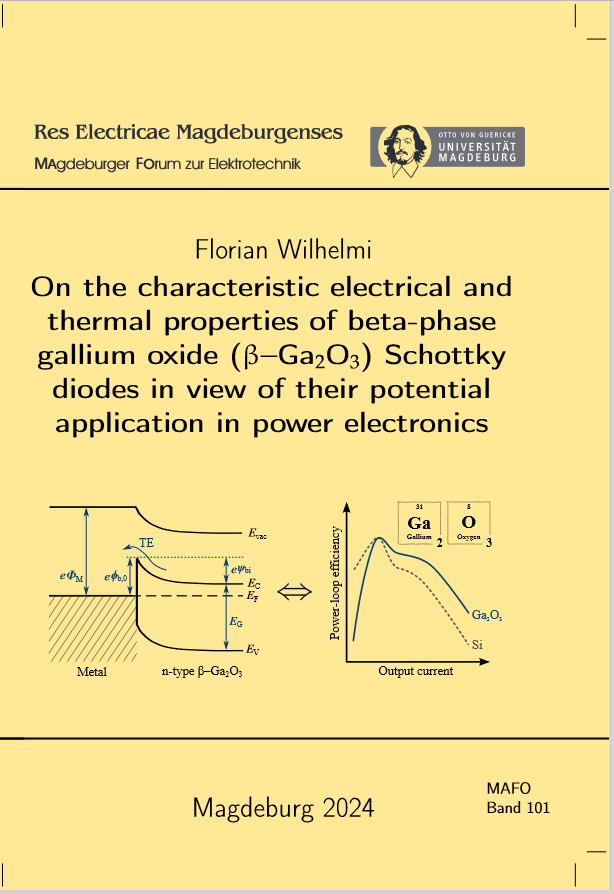On the characteristic electrical and thermal properties of beta-phase gallium oxide (β–Ga2O3) Schottky diodes in view of their potential application in power electronics
DOI:
https://doi.org/10.24352/UB.OVGU-2024-087Keywords:
Halbleitertechnologie, beta-phase gallium oxide, Schottky diodesAbstract
The semiconductor beta gallium oxide (β–Ga2O3) combines a 4.6–4.9 eV wide band gap with the availability of melt-grown wafers and could help meet the growing demand for high-efficiency and low-cost power electronics. However, research still mostly focuses on basic device structures, and the low thermal conductivity raises concerns about potential thermal management problems. The objective of this work is to transition from fundamental device structure research to power electronics applications by experimentally and through simulation investigating the electrical and thermal characteristics of novel β–Ga2O3 diodes from a planned production line. A change of the conduction mechanism leading to an initial decrease and then increase of the conduction losses with rising temperature is observed for multiple but not all diodes. This seems to originate from the device processing rather than the intrinsic properties of β–Ga2O3. Despite a strong variation of the material properties between diodes of the same type, a lower increase in differential on-resistance with rising temperature is observed compared to silicon carbide (SiC) diodes, and measurements of the temperature-dependent ideality factors and Schottky barrier heights indicate stable junction properties. The heat dissipation in Ga2O3 diodes can be improved by thinning the currently 600 μm thick standard devices to thicknesses of 200 μm. In contrast to SiC, however, cooling the devices from the junction side is found to be significantly more effective in reducing the junction temperature despite the smaller cooling area, if the entire anode area is covered with die-attach material. Combined with the potentially low conduction losses, it seems realistic for future Ga2O3 diodes to achieve similar junction temperatures as modern commercial SiC diodes at the same forward current. Even 600 μm thick diodes are successfully implemented in a 400 V buck converter operated at frequencies up to 350 kHz. Peak voltage slew rates exceeding 100 V/ns are achieved, but in continuous operation the diodes exhibit a higher temperature rise than their SiC counterparts. Nevertheless, the efficiencies with a state-of-the-art silicon diode of similar size can be surpassed with the Ga2O3 diodes despite the still higher on-resistance, owing to the absence of recombination losses.
Downloads
Published
Issue
Section
License
Copyright (c) 2024 Res Electricae Magdeburgenses. Magdeburger Forum zur Elektrotechnik

This work is licensed under a Creative Commons Attribution-ShareAlike 4.0 International License.

